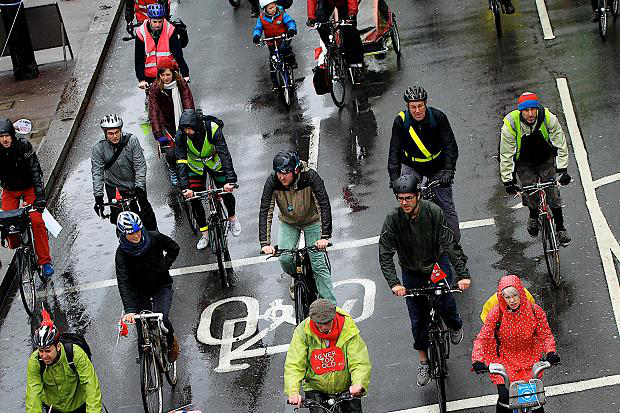
It feels like there is a bit of confusion over what presumed liability would actually mean to cyclists and motorists in the UK. There is no single way of implementing presumed liability or a single approach that has been used across Europe. But in principle at least, it is a fairly simple concept.
A car and a cyclist represent unequal risks on the road. In a collision, the cost of repairing damage to the car is negligible compared to the cost of ongoing medical support for a cyclist’s serious injuries. Currently, without presumed liability, each party would be responsible for their own costs unless they can prove the other is at fault. For advocates of presumed liability, this situation is unfair, and unhelpful.
While the driver’s insurance will likely pay out for the scuffs on the paint, the cyclist is unlikely to receive a penny without a costly compensation suit. Since the risk that the car represents is so much greater than that of the bike, the extent to which the car contributes to the liability should reflect this. Considering the unequal nature of the risks they pose, the car should have presumed liability in an accident unless they can prove otherwise. If a less vulnerable road user injures a more vulnerable road user, their liability should be automatic.
The introduction of presumed liability has been likened by many to the drink driving laws in the UK. Banning drink driving does not stop people doing it. Unfortunately there will always be people who think the rules don’t apply to them, and the reduction in drink driving was slow to begin with. However, the strict laws formed a foundation around which drivers could be educated about the dangers and consequences of drink driving, and the result has been a reduction year on year. While the threat of losing a driving licence or prison sentence are a significant threat, the true reduction has come from a greater understanding of the risks, and the social stigma of drink driving which has developed as a consequence.
Presumed liability is not going to stop cycling deaths overnight. There is no simple fix for road safety, and the best we can ever hope for is a significant reduction through the implementation of a mix of tactics. While presumed liability will help victims of road traffic accidents in the short term financially, over a longer period it has the potential to reduce the number of accidents in the first place.
A presumed liability law will help to develop an understanding among drivers that cyclists are vulnerable road users. While it may seem an obvious point to people who are out riding regularly, those who do not cycle often don’t see it this way.
A ComRes Report commissioned by the BBC in June 2014 asked a cross section of the population ‘which of the following measures, if any, do you think would reduce the numbers of road accidents and deaths among cyclists the most?’ and provided a list of possibilities. Among Londoners, where the rate of cycling deaths is the highest in the UK, the largest percentage of respondents at 34% picked ‘Compulsory lessons on road safety for cyclists who use the roads’.
Some emphasis should be on cyclists to understand how to reduce their own risk, but lack of understanding as to why a cyclist may take the centre of the road, or how much space is needed to safely overtake pose significant avoidable risk. If a driver had presumed liability in the event of a collision, they would be forced to consider their own position on the road. A driver would be less inclined to attempt to overtake on a narrow road, and double check before turning left, not because of the fear of liability, but the understanding that their vehicle poses a threat to the vulnerable road users. The emphasis wouldn’t be on threatening drivers, but on learning to better share the road.